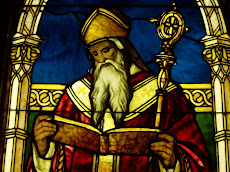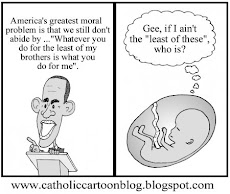In 2000, Joseph Cardinal Ratzinger published a book entitled, The Spirit of the Liturgy, in which he sets for a vision of renewal of worship in the Church. I believe that his vision is of interest to the whole ecumenical Church and not only Roman Catholicism. His book is grounded in Scripture, historically aware and quite practical. I find that my comments on worship generate more debate than those on any other topic among my students and younger readers of this blog. I'm not entirely sure why, but I'm not convinced this is a bad thing. In Pope Benedict XVI, we have a pope who believes that worship is the central means by which the Church can be renewed and the world saved, so my readers should be interested in what he has to say.
In the Preface, Benedict XVI mentions the book by Roman Guardini by the same title, which was published in 1918. He says that this book inagurated the Liturgical Movement in Germany and "helped us to rediscover the liturgy in all its beauty, hidden wealth, and time-transcending grandeur, to see it as the animating center of the Church, the very center of the Christian life. . . We were now willing to see the liturgy . . . as the prayer of the Church, a prayer in which Christ unceasingly becomes contemporary with us, enters into our lives." (7)
Benedict XVI compares the liturgy to a fresco that has been preserved from damage by an overlay of whitewash by later generations. The colors and figures of the fresco are laid bare by liturgical renewal, but the fresco is threatened by destruction if steps are not taken to preserve it from damaging influences. He says that the purpose of his book is to assist with a renewal of understanding of the message and reality of the liturgy so that it can be preserved as a source of renewal in the Church. His goal, therefore, is not to "invent" or "revise" the liturgy, but also not simply to freeze the current liturgy as if it were to be clung to unthinkingly. This is the program of ressourcement applied to worship and it is a matter of being radical enough to return to the roots so that the tree of worship can flourish and bear fruit today.
Over the next few days (or maybe weeks?) I'll try to post on each chapter. There are 12 chapters organized as follows:
Part I: The Essence of the Liturgy
1. Liturgy and Life: The Place of Liturgy in Reality
2. Liturgy - Cosmos - History
3. From Old Testament to New: The Fundamental Form of the Christian Liturgy - Its Determination by Biblical Faith
Part II: Time and Space in the Liturgy
1. The Relationship of the Liturgy to Time and Space: Some Preliminary Questions
2. Sacred Places - The Significance of the Church Building
3. The Altar and the Direction of Liturgical Prayer
4. The Reservation of the Blessed Sacrament
5. Sacred Time
Part III: Art and Liturgy
1. The Question of Images
2. Music and Liturgy
Part IV: LIturgical Form
1. Rite
2. The Body and Liturgy
(1) "Active Participation"
(2) The Sign of the Cross
(3) Posture
(4) Gestures
(5) The Human Voice
(6) Vestments
(7) Matter
One final note is on the meaning of the word "liturgy." Some refer to the "non-liturgical churches" as if it could be the case that any church could worship without liturgy. This is impossible. We all have liturgies. The Orthodox, RC, Anglican and some Protestant traditions have more or less fixed liturgies, whereas the so-called Free Churches do not. Yet every congregation falls into a fairly set liturgy over time, even if the liturgy is referred to as a "worship style." Since we all have liturgies of one kind or another, it is potentially instructive to learn from tradition other than our own. This is the goal of this series: to see what we can learn from the Roman Catholic tradition about worship.
Subscribe to:
Post Comments (Atom)





No comments:
Post a Comment